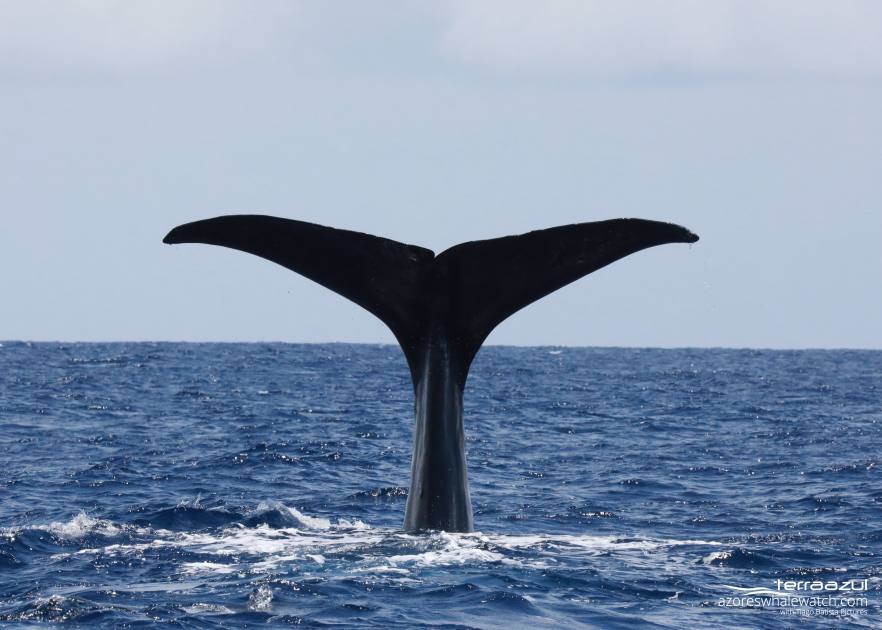
Our most known Sperm Whale (Physeter macrocephalus) bull lifts his massive peduncle before to go for a deep dive.
G-Day whale-watcher mates!!!
Forgive me the Aussie expression, but here at Terra Azul we are still shaking off the red dust left overs from our trip to the World Whale Conference in Hervey Bay, Queensland, Australia. Check our previous post HERE if you wish to know more about it and stay tuned for updates!
Between a hurricane and a tropical storm, also during the past month of October we managed to hit the waters of our beautiful Ocean with Terra Azul boats. Here is our monthly recap of cetacean species sighted!

TerraAzul sightings on October 2019. Source: MONICET.
Common Dolphins (Delphinus delphis) were the most sighted cetacean species in October, followed by Atlantic Spotted Dolphins (Stenella frontalis). Dolphins were often feeding on small schooling fish, in some cases really near to our shores, and often surrounded by hundreds of Cory’s Shearwaters (Calonectris borealis). In this time of the year, shearwater chicks venture for the first time out of their burrowed nests and had to learn how to survive in the Ocean.

Pod of Atlantic Spotted Dolphins (Stenella frontalis) feeding together with Cory’s Shearwaters (Calonectris borealis).
Bottlenose dolphins (Tursiops truncatus) were also encountered several times, while sightings of off-shore Delphinids species were more rare in comparison to the previous months. Striped Dolphins (Stenella coeruleoalba) and Pilot Whales (Globicephala spp.) paid us a visit in a couple of occasions.

Pilot Whales (Globicephala spp.) socializing and spy-hopping near Terra Azul boat.
Turning to larger cetaceans, Sperm Whales (Physeter macrocephalus) were frequently sighted. In particular, a well-known male that we photo-identified several times this year made his appearance again. We also encountered pods of adult females and juveniles socializing at the surface. This was a perfect occasion to listen to some ‘codas’, the sequences of clicks that these whales use to communicate and that change depending of the region where the clan/matriarchal line comes from. Listen yourself to the recording from the boat’s speakers 😉
Finally, also this month, we had some special migratory guests in São Miguel waters: Sei Whales (Balaenoptera borealis)!!!

Sei Whale (Balaenoptera borealis) seen from the back surfacing.
Winter is coming, stay tuned for what it will bring in our waters! 🙂


















Your thoughts on this?